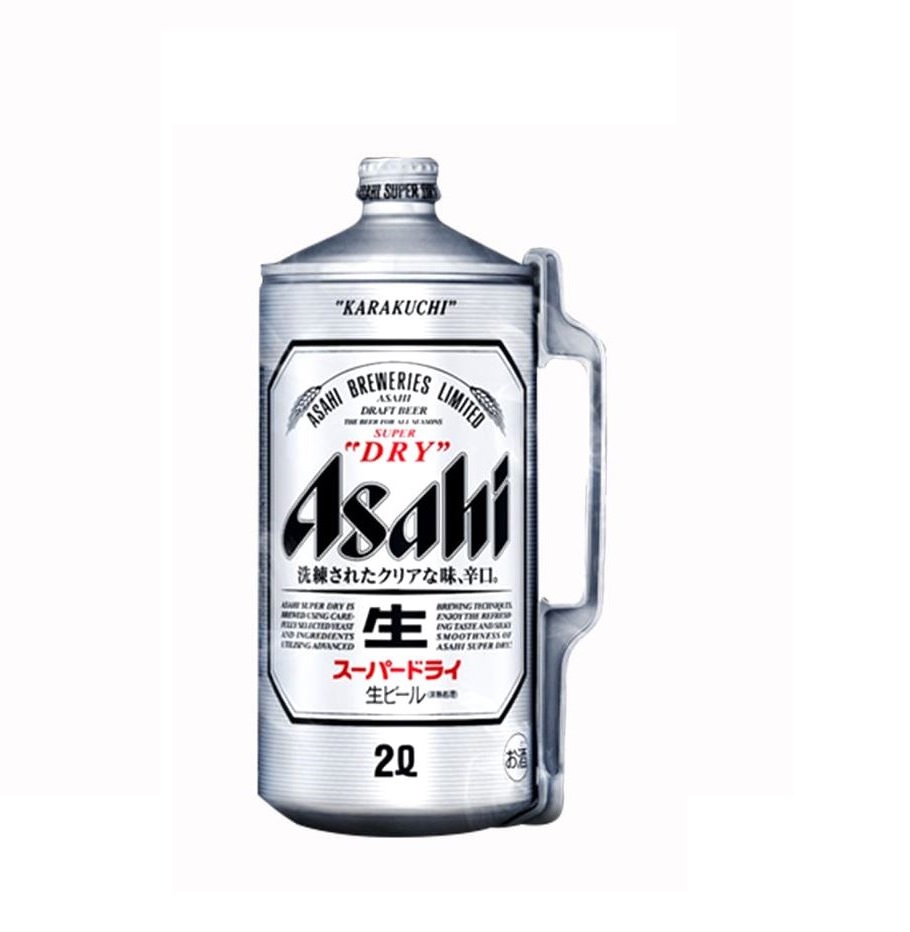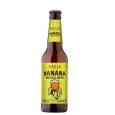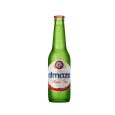Asahi Super Dry, often simply known as Asahi Dry Beer, represents a landmark in the evolution of Japanese brewing. Launched on March 17, 1987, this beer not only captured the essence of what consumers were seeking but also set a new benchmark in the industry. Unlike traditional beers that dominated the market with their rich maltiness and robust profiles, Asahi Dry Beer was crafted to cater to a growing trend towards lighter, crisper flavors that complemented a rapidly changing Japanese diet.
The inception of Asahi Dry Beer was not a mere coincidence but a strategic response to detailed market research. This research highlighted a consumer shift towards beers that offered high alcohol content and a clean, minimal aftertaste—traits that Asahi masterfully encapsulated in its new product. By focusing on these specific attributes, Asahi was not just brewing another beer; it was creating a new paradigm in the beer world.
The introduction of Asahi Dry Beer marked the birth of the dry beer category, a segment that did not exist prior to Asahi’s innovation. Its success prompted an immediate response from competitors, giving rise to what would be known in the beverage industry as the “Dry Wars.” These were not merely business skirmishes but a significant redefining of consumer preferences and brewing standards across Japan and, eventually, the world.
Today, Asahi Dry Beer continues to enjoy a revered status among beer aficionados and casual drinkers alike. Its ability to maintain a consistent taste profile while adapting to various international markets is a testament to its foundational brewing principles. The legacy of Asahi Dry Beer is not just about the beverage itself but also about its enduring impact on the global beer landscape, setting trends and expectations that continue to influence new generations of breweries and beer lovers.
| Aspect | Details |
|---|---|
| Launch Date and Initial Concept | Launched on March 17, 1987, Asahi Dry Beer was crafted in response to market research indicating a shift towards lighter, crisper beer flavors that matched changes in the Japanese diet. |
| Market Impact | Introduced the dry beer category, setting new standards in the industry and prompting the “Dry Wars” among competitors, which redefined consumer preferences and brewing practices. |
| Consumer Shift | Targeted evolving consumer preferences for high alcohol content with a clean, minimal aftertaste, effectively capturing and expanding the market base. |
| Global Influence | Asahi Dry Beer enjoys a revered status worldwide, adapting its taste profile to fit international markets while staying true to its original brewing principles. |
| Legacy and Continuation | The legacy of Asahi Dry Beer extends beyond its specific formula to influence global beer trends and expectations, continuing to impact breweries and beer enthusiasts globally. |
Contents
Development of Asahi Super Dry
The journey of Asahi Super Dry began with a comprehensive analysis of the market and consumer preferences. This research was pivotal, revealing a shift in consumer tastes towards lighter, more refreshing beers. Specifically, there was a growing demand for a beer that was less malty, had higher alcohol content, and offered a clean, light aftertaste. This feedback was crucial in shaping the development strategy for what would eventually become Asahi Super Dry.
This consumer input highlighted a clear need: a sophisticated, less filling beer that could accompany meals without overpowering the food, a common preference in Japan where dining often involves subtle flavors. Asahi responded to these insights with a product that aligned perfectly with the evolving dietary landscape, setting the stage for a revolutionary new offering in the beer market.

In response to the market research, Asahi embarked on “Project FX,” a secretive and innovative development process aimed at crafting the perfect dry beer. The goal was to engineer a beer that not only met the market demand for dryness but also maintained a high-quality taste. The brewing process involved significant technological advancements, particularly in the method of fermentation used to achieve high attenuation, resulting in less residual sugar and a drier finish.
The brewing team experimented with various techniques to increase carbonation, enhancing the crisp bite and refreshing mouthfeel that Asahi Super Dry would become famous for. These innovations not only contributed to the unique taste and texture of the beer but also set new standards in brewing technology.
Asahi Super Dry was officially launched on March 17, 1987. It quickly set a new standard in the beer industry, giving birth to the dry beer category. The initial reception was overwhelmingly positive, with consumers appreciating the unique, crisp taste that differentiated Asahi Super Dry from more traditional beers available at the time.

The success of Asahi Super Dry spurred competitors to introduce their versions of dry beer, leading to a competitive era known as the “Dry Wars.” This period was characterized by rapid innovation and marketing strategies focused on capturing the growing segment of consumers favoring dry beers. Asahi’s pioneering role in this category solidified its status as a leader in the brewing industry.
| Phase | Details | Impact |
|---|---|---|
| Market Research | Revealed consumer preference for lighter, more refreshing beers with higher alcohol content and a clean, light aftertaste. | Guided the development of Asahi Super Dry to meet these specific consumer demands. |
| Development (“Project FX”) | Involved secretive, innovative processes to create a beer with high attenuation, increased carbonation, and a crisp mouthfeel. | Led to technological advancements in brewing, particularly in fermentation and carbonation techniques. |
| Launch and Reception | Launched on March 17, 1987, Asahi Super Dry quickly differentiated itself in the market with its unique, crisp taste. | Established the dry beer category and sparked the “Dry Wars” among competitors. |
| Industry Influence | The success of Asahi Super Dry inspired competitors to introduce their own dry beers, leading to rapid innovation in the market. | Reinforced Asahi’s leadership in the brewing industry and set new consumer expectations for beer globally. |
Unique Characteristics of Asahi Super Dry
A key component of Asahi Super Dry’s distinctiveness is its use of a proprietary yeast strain, Asahi #318. This special yeast is crucial for achieving the high level of attenuation that is characteristic of Asahi Super Dry, meaning it ferments more sugars into alcohol, resulting in a drier beer with fewer residual sugars.
The use of Asahi #318 not only enhances the dryness of the beer but also contributes to its crisp, clean taste, making it exceptionally refreshing and suitable for consumption over extended periods without flavor fatigue.
Asahi Super Dry is brewed using select grains and hops sourced from around the world, based on stringent criteria for flavor consistency and sustainability. The barley used has a high starch content, ideal for the high attenuation process, while the combination of noble-style bitter hops and fine aroma hops contributes to the beer’s smooth, refined taste.

These ingredients are chosen not only for their quality but also for their ability to consistently produce the same excellent taste in every batch of Asahi Super Dry, regardless of where it is brewed around the world.
Asahi Super Dry features an alcohol by volume (ABV) of 4.9-5.2%, depending on the package type and location, which aligns with its market positioning as a strong yet accessible beer. The International Bitterness Units (IBU) are set at 20, providing just enough bitterness to balance the malt and enhance drinkability. The Standard Reference Method (SRM) score of 4 indicates a very pale and clear color, which is visually appealing and reflects the lightness of the beer. These metrics are critical in defining the profile of Asahi Super Dry and ensuring its appeal to a broad audience.
| Component | Description | Impact on Beer |
|---|---|---|
| Yeast (Asahi #318) | A proprietary yeast strain that achieves high attenuation by fermenting more sugars into alcohol, resulting in fewer residual sugars. | Enhances the dryness and contributes to the crisp, clean taste, making the beer refreshing and reducing flavor fatigue. |
| Ingredients | Select grains with high starch content, noble-style bitter hops, and fine aroma hops sourced globally. | Ensures flavor consistency and sustainability; contributes to a smooth, refined taste and consistent quality across batches worldwide. |
| Beer Metrics | ABV of 4.9-5.2%, IBU of 20, SRM of 4. | Aligns with market positioning as a strong yet accessible beer; provides enough bitterness to balance the malt and enhance drinkability while maintaining a visually appealing light color. |
Personal Testimonial and Comparative Analysis
My first encounter with Asahi Super Dry was nothing short of a revelation. It happened one balmy evening in Tokyo when I was looking to quench my thirst with something that could cut through the humidity without overwhelming my palate. Asahi Super Dry was recommended by a local, and from my first sip, I was struck by its crisp, clean taste that perfectly complemented the delicate flavors of my sushi dinner. This experience marked the beginning of my long-standing preference for Asahi Super Dry.
Comparing Asahi Super Dry with other light beers such as Modelo and Corona, I find that Asahi holds a unique position. While Modelo and Corona are certainly enjoyable, they often feature a sweeter, more pronounced malt character. Asahi, on the other hand, is sharper and more refreshing, which makes it an excellent companion for food without dominating the meal. However, it’s important to note that for IPA enthusiasts who relish robust, hoppy flavors and a bold aftertaste, Asahi Super Dry might seem underwhelming. Its subtlety and restraint are geared more towards those who appreciate a beer that complements rather than competes with the dining experience.

The subtle flavor profile of Asahi Super Dry is precisely what draws me to it time and again. It’s designed to be understated yet sophisticated, offering a clean and crisp finish that refreshes without leaving a heavy or overly bitter aftertaste. This subtlety is often what fans of more aggressive beers might criticize. They argue that it lacks the complex or lingering flavors that characterize standout craft beers. However, it is this very subtlety that appeals to a significant segment of beer drinkers who prefer a lighter, more refined beer.
Critics often point to Asahi Super Dry’s lack of a strong aftertaste as a downside, but I see it as one of its strengths. The brewing process that emphasizes high attenuation and the use of special yeast strain Asahi #318 ensures that it delivers a clean finish, making it incredibly drinkable and suitable for a variety of occasions and pairings. The absence of a lingering aftertaste means it can accompany almost any dish without overshadowing the flavors, making it an ideal choice for those who enjoy a beer with their meal.
| Aspect | Details | Comparison with Other Beers |
|---|---|---|
| Initial Experience | First tried in Tokyo; impressed by its ability to complement a sushi dinner without overwhelming the palate. | More refreshing and less malty compared to Modelo and Corona, which have a sweeter, more pronounced malt character. |
| Flavor Profile | Crisp, clean, and subtle, designed to be sophisticated yet understated with a clean finish. | Less appealing to IPA enthusiasts who prefer robust, hoppy flavors and a bold aftertaste. |
| Consumer Appeal | Appreciated for its subtlety and restraint, making it ideal for pairing with meals. | Critics might find it lacking in complex or lingering flavors typical of standout craft beers. |
| Strengths | Lack of a strong aftertaste is viewed as a strength, enhancing its drinkability and versatility in food pairings. | Contrasts with beers that feature a heavy or overly bitter aftertaste, which can dominate rather than complement a meal. |
Asahi Super Dry stands out in the beer market not because it tries to be the boldest or the strongest, but because it perfectly executes its goal of being crisp, dry, and refreshing. Its unique brewing process, the careful selection of ingredients, and the innovative use of a special yeast strain create a beer that is both high in quality and consistent in taste across the globe. These characteristics have not only earned it a special place in the hearts of beer lovers but have also cemented its legacy as a staple in both the Japanese and international beer scenes.
The beer’s success and endurance are a testament to the foresight of its brewers who understood and catered to a shift in consumer preferences towards lighter, more refreshing beverages. As Asahi Super Dry continues to be a popular choice for both casual drinkers and beer aficionados alike, its role as a pioneer in the dry beer category is both celebrated and revered. Whether enjoyed in a bustling Tokyo bar or a quiet home elsewhere in the world, Asahi Super Dry remains a distinguished example of how simplicity and subtlety can indeed be the ultimate sophistication in brewing.




